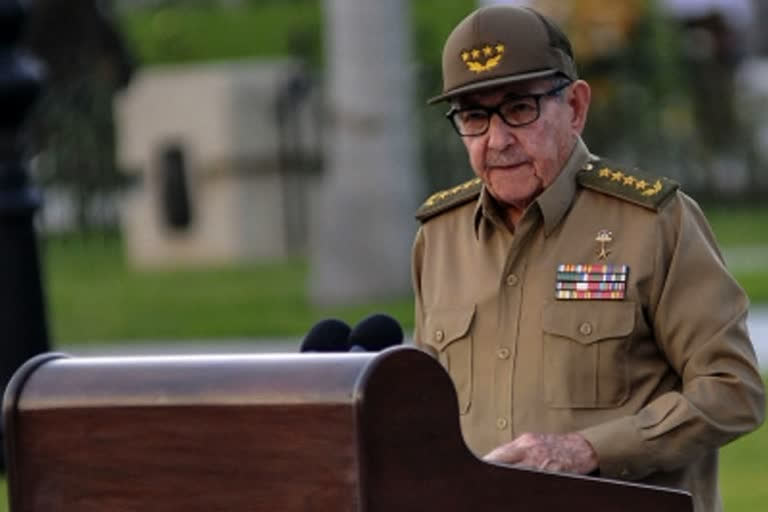Hyderabad: For the first time since Raúl and his brother Fidel seized power along with other revolutionaries in Cuba in 1959 -- forcing dictator Fulgencio Batista into exile -- the island nation is all set to begin a new chapter without the Castros.
Fidel Castro, one of the most prominent personalities of the 20th Century, died aged 90 in 2016. His brother Raúl Castro, who took over as the president in 2008, has announced his will step down from his post as the country begins its eighth Communist Party Congress on Friday.
Here's a chronology of events to help understand the history Of Cuba, the Communist Revolution and Fidel Castro's Rule
1898 - US defeats Spain, which gives up all claims to Cuba and cedes it to the US
1902 - Cuba becomes independent with Tomas Estrada Palma as its president; however, the Platt Amendment keeps the island under US protection and gives the US the right to intervene in Cuban affairs
1925 - Socialist Party founded, forming the basis of the Communist Party
1933 - Machado overthrown in a coup led by Sergeant Fulgencio Batista
1934 - The US abandons its right to intervene in Cuba's internal affairs, revises Cuba's sugar quota and changes tariffs to favour Cuba
1944 - Batista retires and is succeeded by the civilian Ramon Grau San Martin
1952 - Batista seizes power again and presides over an oppressive and corrupt regime
1953 - Fidel Castro leads an unsuccessful revolt against the Batista regime
1956 - Castro lands in eastern Cuba from Mexico and takes to the Sierra Maestra mountains where, aided by Ernesto "Che" Guevara, he wages a guerrilla war
1958 - The US withdraws military aid to Batista
1959 - Castro leads a 9,000-strong guerrilla army into Havana, forcing Batista to flee. Castro becomes prime minister, his brother, Raul, becomes his deputy and Guevara becomes third in command
1960 - All US businesses in Cuba are nationalised
1962 - Cuban missile crisis ignites when, fearing a US invasion, Castro agrees to allow the USSR to deploy nuclear missiles on the island. The crisis was subsequently resolved when the USSR agreed to remove the missiles in return for the withdrawal of US nuclear missiles from Turkey
1965 - Cuba's sole political party renamed the Cuban Communist Party
2002 - National Assembly amends the Constitution to make socialist system of government permanent and untouchable.
2008 - Fidel steps down and Raul Castro takes over as president
2013 February - The National Assembly re-elects Raul Castro as president. He says he will stand down at the end of his second term in 2018, by which time he will be 86
2014 December - In a surprise development, US President Barack Obama and Cuba's President Raul Castro announce moves to normalise diplomatic relations between the two countries, severed for more than 50 years
2016 March - Cuba and the European Union agree to normalise relations
2016 November - Fidel Castro, former president and leader of the Cuban revolution, dies at the age of 90. Cuba declares nine days of national mourning
2018 April - Senior Communist Party stalwart Miguel Diaz-Canel becomes president, ending six decades of rule by the Castro family
2021 April- Raul Castro announces resignation as head of Cuba’s Communist Party
